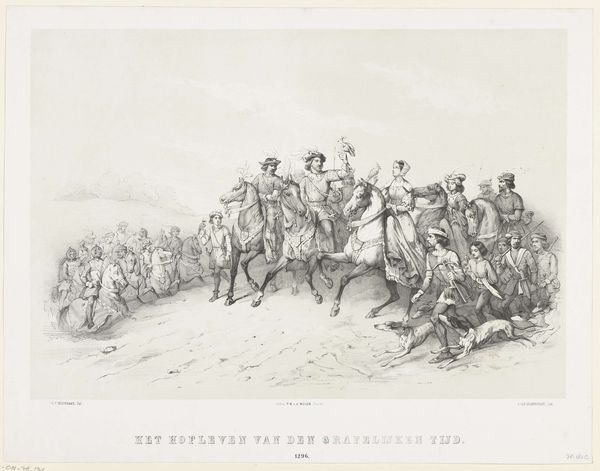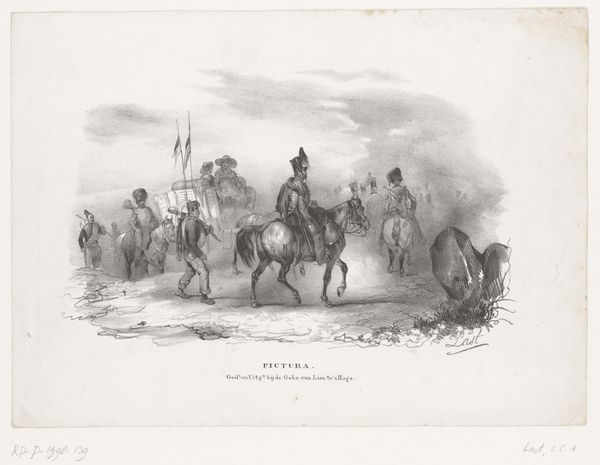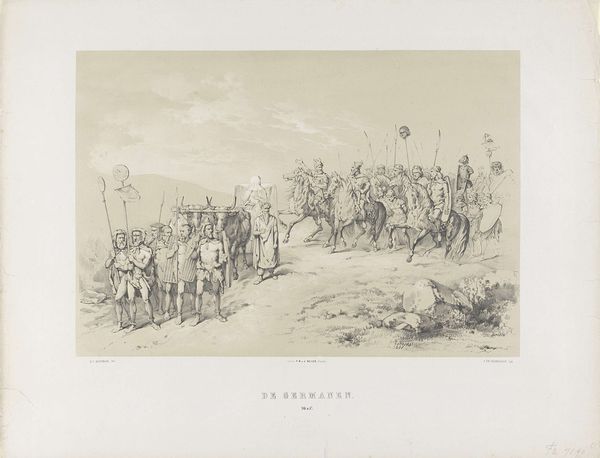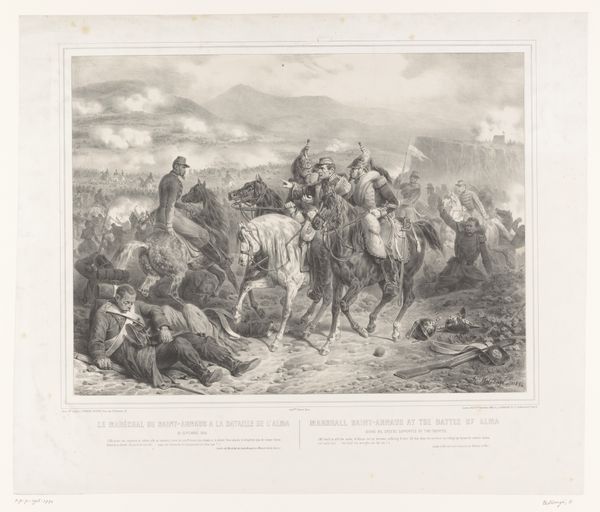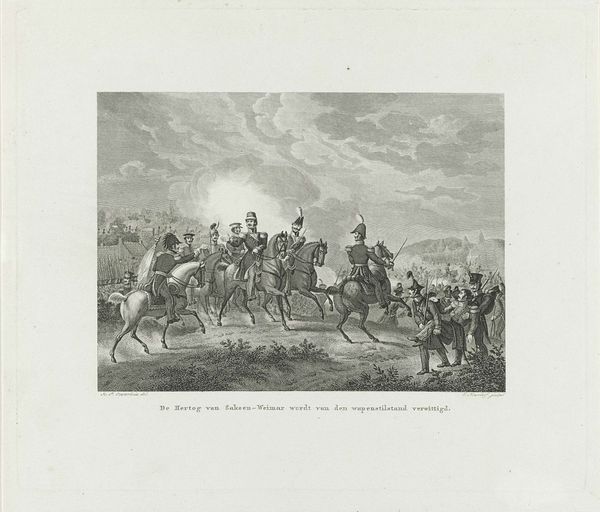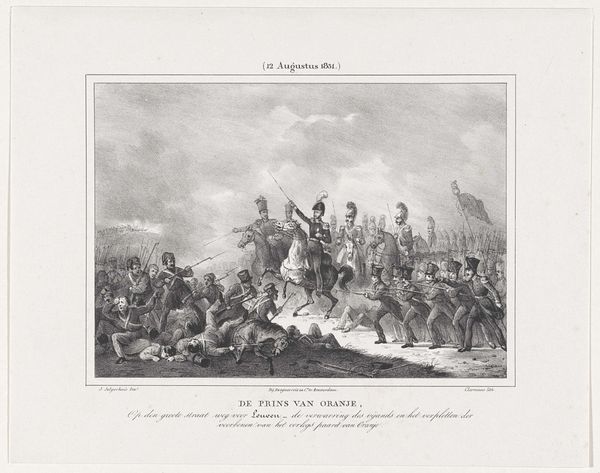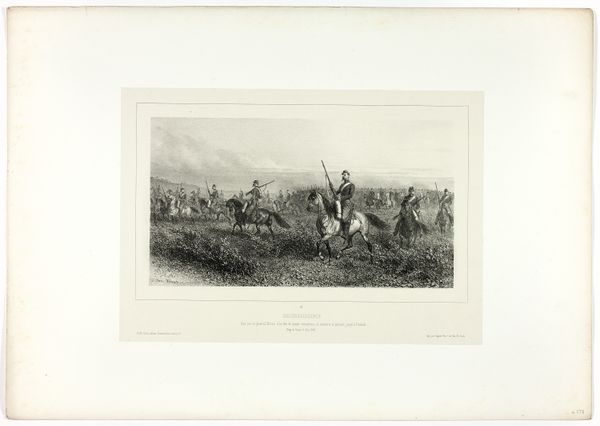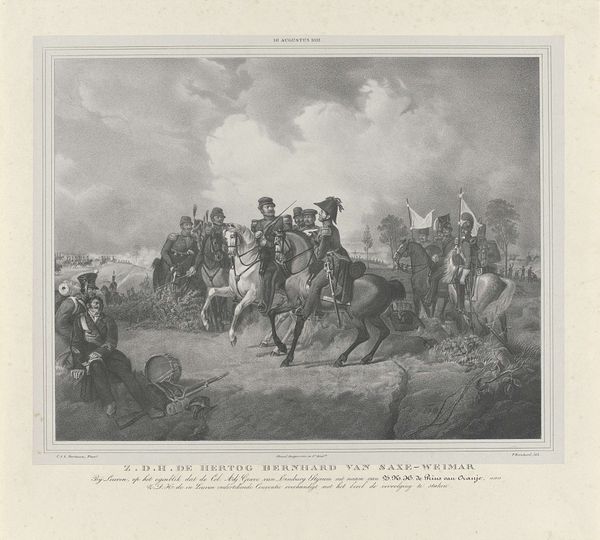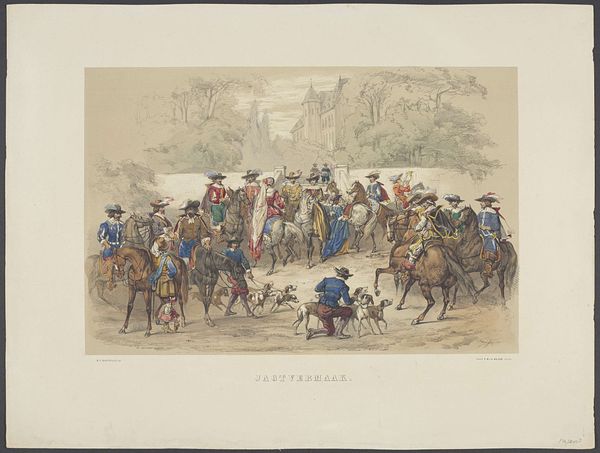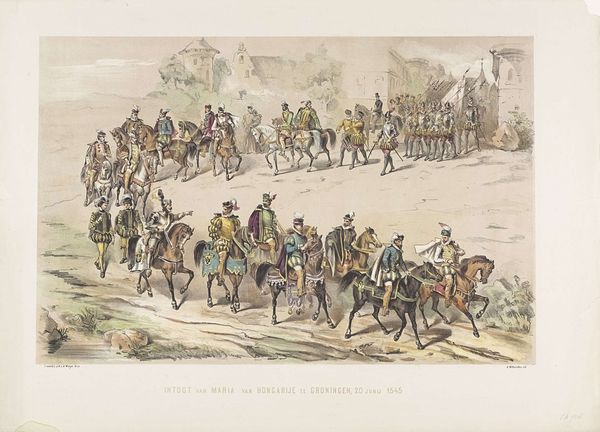
print, engraving
# print
#
landscape
#
history-painting
#
engraving
Dimensions: height 477 mm, width 620 mm
Copyright: Rijks Museum: Open Domain
Editor: This is "Utrechtse maskerade van 1851: Hofleven in 1296", a print made by Antonie Johannes Groeneveldt in 1851. I'm really struck by the way the figures almost seem to fade into the landscape. How do you interpret the artist’s choices in depicting this historical scene? Curator: Note the careful arrangement of forms; the artist skillfully uses line and value to direct our gaze. Observe the hierarchy within the composition, moving from the active foreground—horses and hunting dogs, lively and present—to the more static gathering in the midground, all under a soft diffused light in the background. The visual impact comes from the gradations, does it not? Editor: Yes, it’s all in these subtle gradations of value and line. I didn't even realize how intentional that layering was until you pointed it out. Why this choice to use a landscape style for what appears to be a historical account? Curator: Indeed. It’s fascinating how the artist intertwines history and landscape. The engraving technique, which prioritizes precise linear marks, becomes a medium through which time is also represented. The landscape functions almost as a stage, its relative blankness accentuating the finery of the costumed figures. Is there anything in how they're positioned to one another that informs the scene? Editor: I do wonder why all the characters are facing a single direction as if focused on a performance happening to the viewer’s left of the frame. Thank you, this helped me appreciate its careful composition so much more. Curator: A pleasure. This work underscores the point that all elements— subject, and technique—work interdependently to make up the final image.
Comments
No comments
Be the first to comment and join the conversation on the ultimate creative platform.
